There were 15 minutes left. There was only one thing left to do. Paul Simms, the mastermind behind eyeforpharma, had the difficult job of summarizing the past three days in Barcelona. Nearly 900 senior pharma leaders, patients and service partners had gathered for the pre-eminent, largest attended pharma conference of the year. We enjoyed awesome speakers, great conversations, seeds of ideas and new relationships. And beyond that, we are standing taller, feeling prouder.
Instead of trying to summarize it himself, Paul did a very smart thing. He passed the microphone. Not to the keynote speakers, or the sponsors or the pharma participants but to the five patient representatives who had occupied the front row for the entire conference. Nuria Zuniga, an articulate health advocate who lives with Lupus, summed it up beautifully.
She admitted that in her first tweets from the conference she did not want to mention that she was at a pharma conference. What would her loyal following of patients think of her? She worried they would accuse her of going to the dark side. By the end of the two days however, she said she was proudly tweeting about the conference, the pharma people in it and her collaboration with them!
And this is how it begins; collaboration for better outcomes, collaboration between patients and pharma professionals, collaboration within pharma companies and collaboration between pharma companies. Silos were lowered at this conference.
The theme of the conference was “The customer is in charge”. Unless you’ve been under a rock for the last few years, you’ve noticed pharma is trying to be more patient focused. But what does this mean exactly?
I remember thinking as I left efp Barcelona this time last year how much needed to be done to move us from wanting to be patient centric to making patient centricity work. So it was with great anticipation that I began this year’s conference. This time in a new role; not just as a speaker but as a chair and an interviewer. Quite frankly, I was worried about what would transpire. Would things have stagnated? Had there been progress?
It turns out I need not have worried! I was blown away by the quality of the presentations this year; in both content and delivery. It reminded me of TED conferences. We enjoyed insightful, well-prepared, well-rehearsed, great presentations by smart, passionate people.
Let me share just a few of the key themes that emerged.
Key theme #1 – Patient centricity is for everyone
Dr. Lode Dewulf, Chief Patient Affairs Officer from UCB and conference chair, kicked off the meeting by removing his tie—a symbolic gesture, he explained, to encourage us to let down our guards and roll up our sleeves to work together. He boldly stated:
“You can not work in pharma if you do not have the patient as your main focus.”
David Loews of Sanofi made a dramatic visual point when he called out diseases one by one and asked us to stand when he named one that affected us or a loved one. No one was left seated. We are the patients too! With this he planted a seed that may grow into a name change, from customer centric, to patient centric to people centric. I like it. People centric.
In the past at this conference, patient centricity was discussed in the Patient Engagement stream. Similarly, in our companies, we have delegated patient centricity to those in the patient-centric departments. But this year it was different. Patient centricity was the unifying theme that bound together the disparate aspects of the conference: the Sales Excellence, the Multichannel Marketing and the Key Account Management streams.
We have been so proud of ourselves for putting patient centricity in our missions and visions. And some companies even have a patient-centric department. But like a child learning a new skill, we had a false sense of bravado. It now appears that we are ready to take the next step. To move from patient-focused projects to patient-focused cultures!
As Stephen McMahon, Interim CEO of International Alliance of Patients’ Organizations said “The pharma industry has an important role but you can not do well if you don’t do good.”
And our people love it. “It is like releasing the prisoners when we empower our people to focus on the patient,” said David Loew from Sanofi.
Research shows that when we empower our people to focus on their purpose that we will achieve our greatest outcomes. In my talk, I did my best to share the evidence that patient centricity is not just the morally imperative thing to do but the one thing that will make the biggest difference to our outcomes. Purpose-driven companies (those that focus on the difference they make in the world) are more profitable!
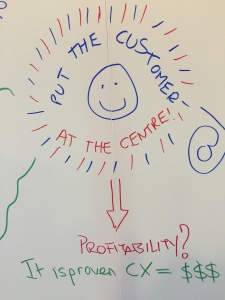
This was found in the centre of the graffiti wall which asked participants “If you could change one thing in pharma, what would it be?”
Key theme #2 – Connect with patients? Yes we can!
Of course we can’t talk to patients! Or can we? UCB has challenged this notion. For fear of litigation, we told our people to never speak to a patient. Before governments or other bodies impose rules on us, let’s regulate ourselves. Let’s make sure we are doing the right things when we connect with patients. UCB has led the way. Better yet, they shared their framework for compliant patient engagement – really the why and how to patient engagement. And they encouraged others to review and contribute to the eventual improvement of those guidelines. I can’t wait to see the improvements resulting from collaboration at next year’s event!
In my interview with Gitte Aabo, inspirational leader and President and CEO of LEO Pharma I asked her, what was it that triggered her mindset shift to patient centricity. After all, she was an economist by trade. She said she remembers reading letters from patients whose lives had changed as a result of the medications her company made. She reflected on the fact that she had never written a letter of thanks to any company (okay maybe just to complain once or twice). The impression was made on her that our work makes a difference to people’s lives. And she has never forgotten it. She leads by example and has been listening and focusing on patients ever since.
Engaging with patients is a great step forward and it is not enough. Anne Beal warned us that being patient centric is not just about engaging and listening to the patient. It’s not enough to just run patient programs. We need to take the next step and infuse our cultures with patient-centricity through our most important asset; our people.
Key theme #3 –Gaining back our trustworthiness
Keith Allen from Novartis shared some bad news about the reputation of pharma. It has continued to fall over the past three years.
What should we do? Be transparent, open and collaborative.
And this conference was a great place to start. This is the first time I have ever seen patients front and centre at a pharma conference. They heard everything and were offered the mic before anyone else after every presentation. Maybe this will help change the sad statistic at 92% of patients trust us just a little or not at all to do what’s right for them.
In the spirit of collaboration, we need to stop seeing the patient as “my” patient! Pharma companies have to collaborate to be really “patient centric”! No more working in silos. Co-creation of information and initiatives by disease across multiple pharma companies is the way of the future and the path to increased trustworthiness and partnerships.
And speaking of collaboration, for the first time ever, I heard senior leaders talk about the need for collaboration between companies.
“Trust and partnership will be key to the future,” said Mary Baker, the world’s best-known patient advocate.
“There has been a lot of stigma attached to pharma,” said Sir Michael Hirst, the President of the International Diabetes Federation. He continued by saying, “Stigma only disappears when we shine a bright light on it. We need to forge open, transparent, ethically sound, long-term partnership in which we can make a difference,” he appealed.
“If you lose the trust, you lose the business.” Added Stephen McMahon. We need to work together to gain back the trust in our industry. Together we can do better than any one of us alone.
In the end, to close the conference, Dr. Anne Beal, Chief Patient Officer from Sanofi shared with us that she is trying to put herself out of work. “What does success look like?” she asked.
“When every person in the organization has the mentality ‘I’m a solder of the patient’s will.’”
She wants patient-centricity to be so much a part of the culture that there is no need for a Chief Patient Officer.
Paul and John and I stayed behind after the conference closed to gather our video gear from our interview station. We thought we were the last to leave. But we weren’t. Five patient advocates were the last to leave. It was like they didn’t want to. We talked with them as they reviewed the notes people had scrawled on the graffiti wall that had been set up to capture attendees’ thoughts. They were exhilarated and exhausted at the same time. The word ‘elated’ comes to mind… and proud. They were proud of themselves and dare I say proud of pharma. I was too.
If you’re sad you missed it, don’t worry. There is a similar event coming to you. For my colleagues in Canada, Sales and Multichannel Canada 2015 is eyeforpharma’s 6th event in Canada and will show you how truly focusing on the patient, effectively using multichannel and keeping your sales teams fresh will pioneer change in your company. I’ll be there with speakers from Lundbeck, LEO Pharma, Bayer, Novartis and many more. You can reserve your place at https://secure.eyeforpharma.com/marketingcanada/register.php
As well as the next Barcelona event in 2016, eyeforpharma has similar events coming up in Philadelphia (I’ll be speaking and chairing there too), Toronto, Tokyo, Miami (for Latin America) and Sydney. They are just about to launch in South Africa and have their Patient Summit in London in June. They have Patient-Centric Clinical Trials shortly, also in London. If you want your colleagues to believe as you do, let them know.
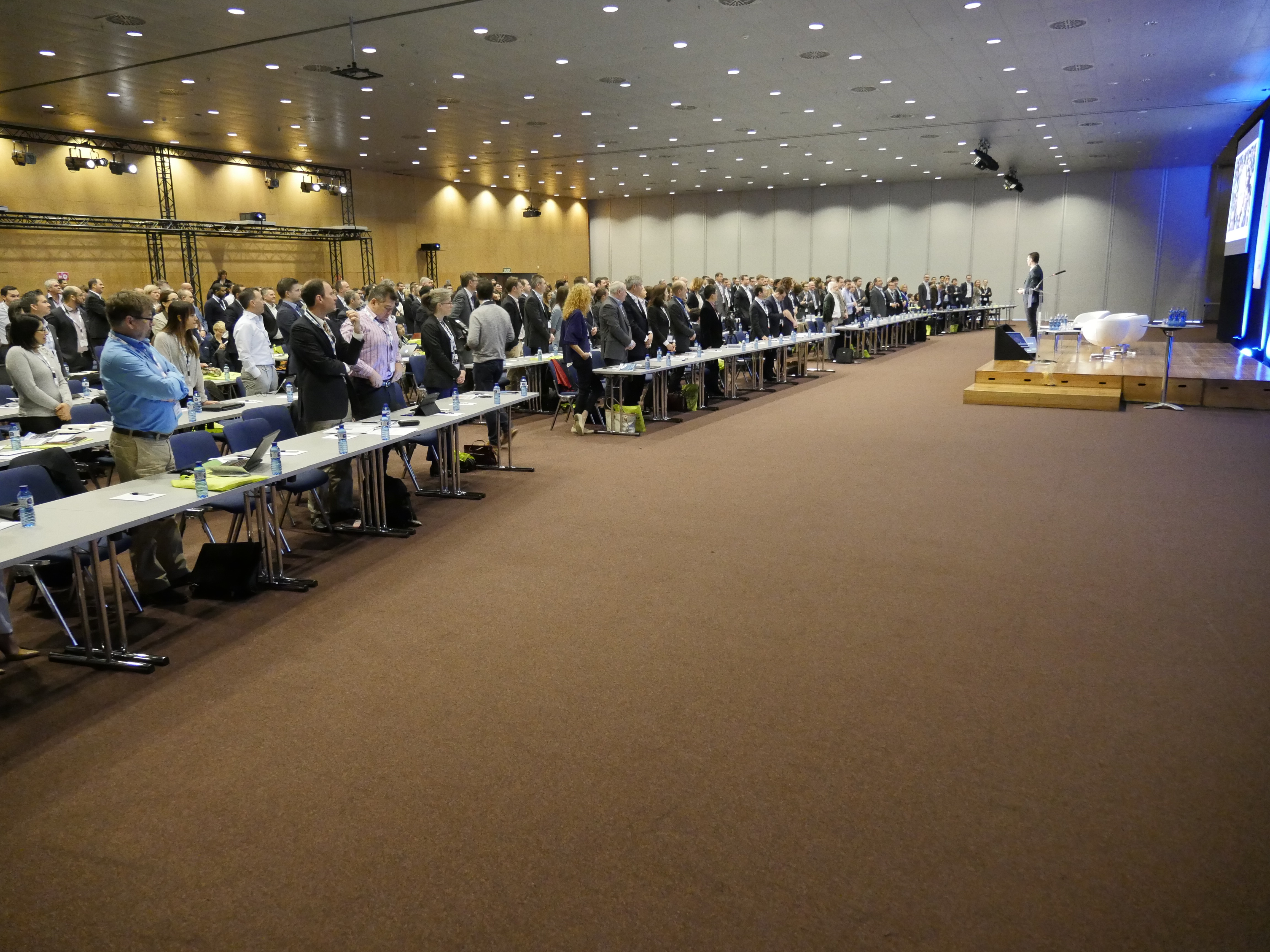
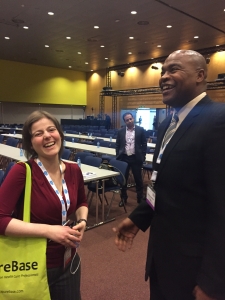
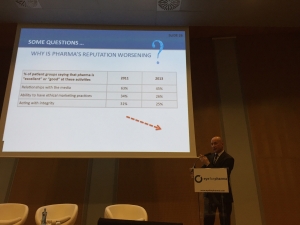
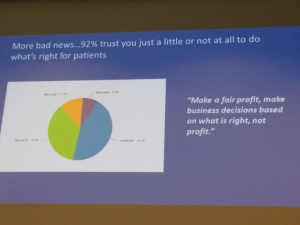
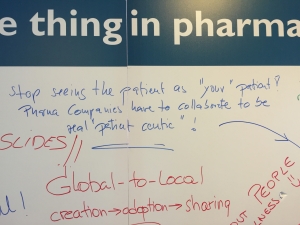
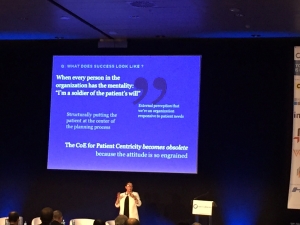
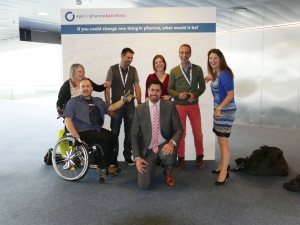


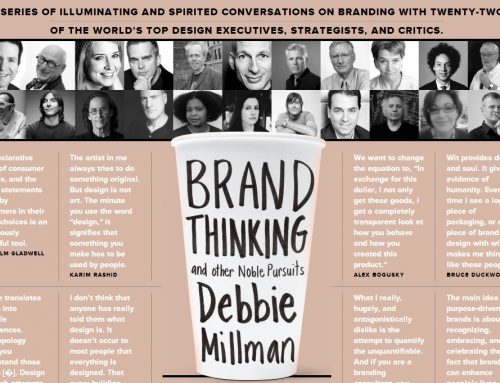
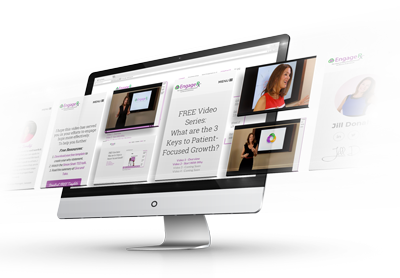





















Leave A Comment